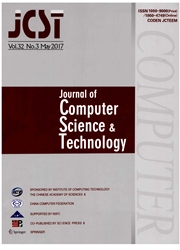

 中文摘要:
中文摘要:
Dataflow 建筑学在许多高效的计算盒子中显示出它的优点。在 dataflow 计算,大量数据经常在通过 network-on-chip (NoC ) 处理元素之中被转移。因此,路由器设计在 dataflow 建筑学的性能上有重要影响。普通路由器为控制流动多核心建筑学被设计,我们发现他们不对 dataflow 建筑学合适。在这个工作,我们在 dataflow 建筑学的 NoCs 分析并且提取数据转移的特征:多重目的地,高注射率,和对延期敏感的性能。基于三个特征,我们为 dataflow 建筑学建议一个新奇、有效的 NoC 路由器。建议路由器支持多目的地;因此,它能在单个转移与多重目的地转移数据。而且,路由器采用输出缓冲区最大化产量并且采用非迁徙包最小化转移延期。试验性的结果证明建议路由器能在一个最先进的路由器上由 3.6x 改进 dataflow 建筑学的性能。
 英文摘要:
英文摘要:
Dataflow architecture has shown its advantages in many high-performance computing cases. In dataflow computing, a large amount of data are frequently transferred among processing elements through the network-on-chip (NoC). Thus the router design has a significant impact on the performance of dataflow architecture. Common routers are designed for control-flow multi-core architecture and we find they are not suitable for dataflow architecture. In this work, we analyze and extract the features of data transfers in NoCs of dataflow architecture: multiple destinations, high injection rate, and performance sensitive to delay. Based on the three features, we propose a novel and efficient NoC router for dataflow architecture. The proposed router supports multi-destination; thus it can transfer data with multiple destinations in a single transfer. Moreover, the router adopts output buffer to maximize throughput and adopts non-flit packets to minimize transfer delay. Experimental results show that the proposed router can improve the performance of dataflow architecture by 3.6x over a state-of-the-art router.
 同期刊论文项目
同期刊论文项目
 同项目期刊论文
同项目期刊论文
 期刊信息
期刊信息
